The Ten Stages of the Mahayana Bodhisattva Path
The Eighth Stage
Part 10
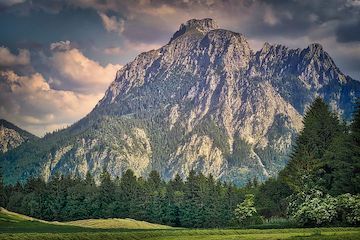
Introduction
Stages of the Mahayana Bodhisattva Path are similar to the Theravada idea of the Noble Eight-fold Path, although not the same in the order of the stages, as well as the aim of the various stages that comprise the total trajectory that the Bodhisattva has to traverse. The idea of the Bodhisattva path is linked to the idea of bodhicitta, the aspiration of becoming enlightened, and this aim is for the benefit of all sentient beings—when compared to the Arahant idea it is distinguished by the fact, that the Bodhisattva holds off on attaining final non-returning Nirvana until all sentient beings are brought along the journey of the Bodhisattva path towards Enlightenment.
Mahayana Texts
Various Mahayana texts discuss the stages of the path in varying detail and order. For this tenth article in the series, I’ve mainly followed the stages of the Path as explained in the Dasa Bhumika Sutra. Dasa bhumika in Sanskrit means ten stages.
In the Dasa Bhumika Sutra, a Bodhisattva is compared to gold in each stage, which is purified more and more by being heated in the goldsmith's fire until it is at last made into an ornament to be worn around the neck of a powerful wheel-turning monarch (cakravartin). The bodhisattva's splendor is likened to the light of the moon and the sun. In each subsequent stage, a Bodhisattva's glory and power (prabhava) increase a hundred-fold, a thousand-fold, a million-fold, and so on.
I’ve also consulted the abhidharma-samuccaya text of Asanga, the prajna-paramita abhi-samaya-lankara, the Maha-vastu, and the Mahayana-sutralamkara text. The Avatamsaka Sutra (Flower Ornament Scripture) has great details on the 10 stages of the path as well, including the Gandavyuha commentary. For cross-reference purposes I’ve used the yogacara-bhumi text, which incorporates the Bodhisattva path into an even greater 17 stages, to verify Sanskrit terminology. The ‘Materials for a Dictionary of The Prajnaparamita Literature’ by Edward Conze has been very useful, in verifying Sanskrit terms as they are used in the various Prajna Paramita texts.

In this article, I’ll cover the eighth stage of the 10 Stages of the Mahayana Bodhisattva Path.
- The supra-mundane Perfection of Wisdom (prajna-paramita)
- What is the supra-mundane perfection of wisdom?
- Through his non-apprehension of self, being, morality, or enlightenment he purifies the perfection of morality for enlightenment;
- and likewise the perfection of patience by the non-apprehension of self, beings, enduring, and enlightenment;
- the perfection of vigor by the non-apprehension of self, physical and mental vigor, merit and cognition, and enlightenment;
- the perfection of concentration by the non-apprehension of self, beings, meditative-absorptions (dhyana) and concentrations and attainments, and enlightenment;
- the perfection of wisdom by the non-apprehension of self, beings, all-dharmas and enlightenment.
- Boin-Webb, Sara — Abhidharmasamuccaya, The Compendium of the Higher Teaching (Philosophy) by Asanga, 2000, Asian Humanities Press.
- Cleary, Thomas — Buddhist Yoga a Comprehensive Course, The Samdhinirmochana Sutra, 1995, Shambhala Publications.
- Cleary, Thomas — The Flower Ornament Scripture, A Translation of the Avatamsaka Sutra, 1993, Shambhala Publications.
- Conze, Edward — Materials for a Dictionary of The Prajnaparamita Literature,1973, Suzuki Research Foundation.
- Conze, Edward — The Large Sutra on Perfect Wisdom with the Divisions of the Abhisamayalankara, 1975, University of California Press.
- Conze, Edward — The Perfection of Wisdom in Eight Thousand Lines and Its Verse Summary second printing, 1975, Four Seasons Foundation.
- Dayal, Har — The Bodhisattva Doctrine in Buddhist Sanskrit Literature, 1932, Motilal Banarsidass.
- Dutt, Nalinaksha — Mahayana Buddhism, 1978, Motilal Banarsidass.
- Jones, J. J. — The Mahavastu Volume 1, 1949, Luzac & Company Ltd.
- Kimura, Ryukan — A Historical Study of the Terms Hinayana and Mahayana and the Origin of Mahayana Buddhism, 1927, University of Calcutta.
- Sparham, Gareth — Abhisamayalamkara with Vrtti and Aloka in Three Volumes, 2008—2011, Jain Publishing.
- Wayman, Alex — Analysis of the Sravakabhumi Manuscript, 1961, University of California Press.
- Williams, Paul — Altruism and Reality, Studies in the Philosophy of the Bodhicaryavatara, 1998, Curzon Press.
- Williams, Paul — Mahayana Buddhism, The Doctrinal Foundations, second edition, 2009, Routledge.
- Wogihara, Unrai — Bodhisattvabhumi, 1930, Tokyo.
- The Ten Stages of the Mahayana Bodhisattva Path-The Two Preliminary Stages-Part 1
- The Ten Stages of the Mahayana Bodhisattva Path-The Two Preliminary Stages-Part 2
- The Ten Stages of the Mahayana Bodhisattva Path-The Two Preliminary Stages-Part 3
- The Ten Stages of the Mahayana Bodhisattva Path-The Two Preliminary Stages-Part 4
- The Ten Stages of the Mahayana Bodhisattva Path-The Two Preliminary Stages-Part 5
- The Ten Stages of the Mahayana Bodhisattva Path-The Two Preliminary Stages-Part 6
- The Ten Stages of the Mahayana Bodhisattva Path-The Two Preliminary Stages-Part 7
- The Ten Stages of the Mahayana Bodhisattva Path-The Two Preliminary Stages-Part 8
- The Ten Stages of the Mahayana Bodhisattva Path-The Two Preliminary Stages-Part 9
- The Deathless In Buddhism
- The "Timeless" Teaching-Being Beyond Temporality
- The Nine Successive Cessations In buddhist Meditations - Part 1
- The Nine Successive Cessations In buddhist Meditations - Part 2
- The Nine Successive Cessations In buddhist Meditations - Part 3
- The Twelve Links Of Dependent Origination
- THINGS to DEVELOP and THINGS to AVOID
- The First Noble Truth
- The Second Noble Truth
- The Third Noble Truth
- The Fourth Noble Truth
- 10 Fold Path Series
- EATING MEAT — WHY THE BUDDHA WAS NOT A VEGETARIAN
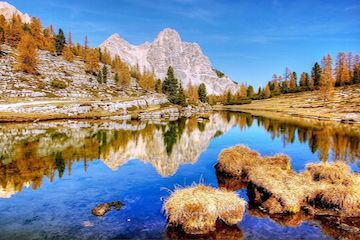
Through his non-apprehension of self, beings, gift, or enlightenment, and through the three-fold purity, he purifies the perfection of giving for enlightenment.
He dedicates all wholesome roots to the Supreme Enlightenment, by means of dedication which is undifferentiated, supreme, unequalled, beyond rational thought, incomparable, and immeasurable.
Summary
Stage 8. The Steadfast Immovable stage (acala bhumi)
The eighth stage is called Steadfast and Immovable, as the Bodhisattva has gotten this far and has become aware of the definitive quality of their development on the Mahayana Path. This is a no-turning-back-now moment, where the Bodhisattva realizes and sees in a vision when and where Buddhahood will be attained in the near future.
In detail
This eighth stage is called acala, because in this stage the bodhisattva is not disturbed by either the perception of signs (nimitta-samjna) or by the perception of effort regarding the signless (animittabhoga-samjna).
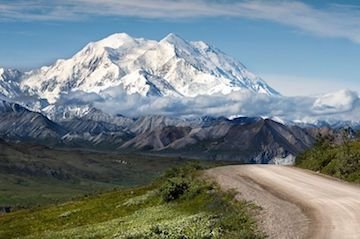
Various types / levels of ignorance have been purified in the first seven stages, and in each subsequent stage the ignorance that is to be purified is more subtle and difficult to address than in the previous stage.
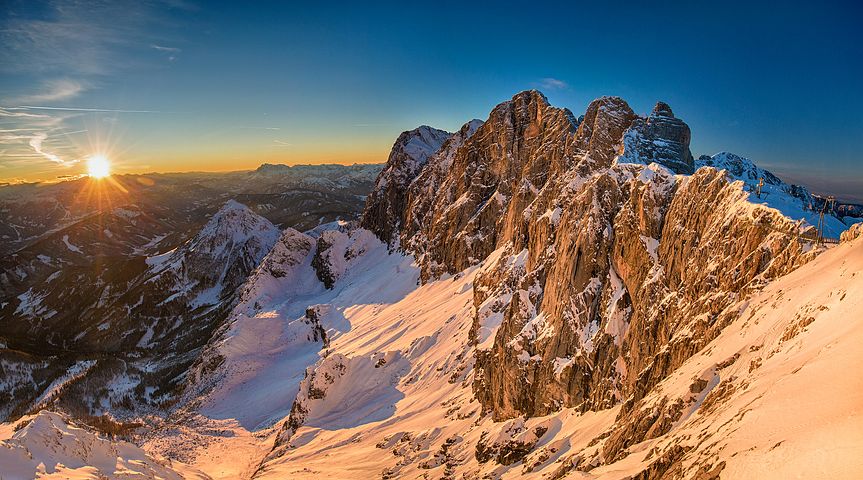
A Bodhisattva after completing and purifying the first seven stages of the path, by means of knowledge and skillful means, merit collection, establishing the great vow of aspiration (maha-pranidhana), establishing himself in the four sustaining powers (adhisthana) (realized truth, renunciation, calm abiding, and wisdom). The Bodhisattva comprehends all realities being without origination, sustainment, cessation, impermanence, and are ultimately by their very nature non-existent; that their beginning, middle, and end have the same suchness; comprehending the transcendental reality of that-ness (tathata) of all things (dharmas).

The Bodhisattva develops ten powers — control over: 1. the duration of one’s life-span (ayu), 2. one’s mind (cetas), 3. [the fulfillment of] one’s requirements (pariskara), 4. one’s actions (karma), 5. one’s choice of birth (upapatti), 6. one’s aspiration (adhimukti), 7. one’s resolute vow [to help sentient beings] (pranidhana), 8. wonder-working powers (rddhi), 9. teachings (dharma) and 10. knowledge and wisdom (jnana).
The Bodhisattva at this stage possess inconceivable, incomparable, immeasurable knowledge and all their actions are without error. There is no possibility of transgression (falling back) from this stage (avaivartya). He is now a member of the Buddha clan.
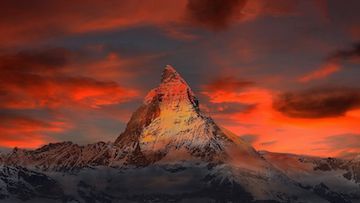
In the eighth stage, the following four dharmas should be completed:
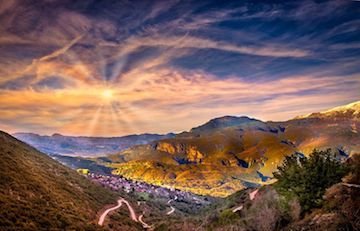
Practitioners in the eighth stage fully realize that all things are non-conceptual, accessible to non-conceptual knowledge. They become wholly detached from mind, intellect, consciousness, thought, and ideation and thus become free from all striving in thought, word, and deed; no actions based on views, passions, or intentions become manifest in them. Nevertheless, even though they have attained peace and liberation, practitioners in this stage who are supported by their past vows of complete enlightenment do not become complacent but are further inspired to seek infinite knowledge. By means of the knowledge they develop, they are able to distinguish many paths in the world, show all aspects of virtue, control their own resolution, know the past and future, repel deluding influences, and carry out enlightening activities in endless contexts without regression.
Furthermore, in the eighth stage, another four dharmas should be completed:
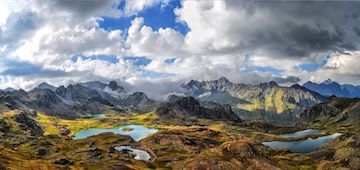
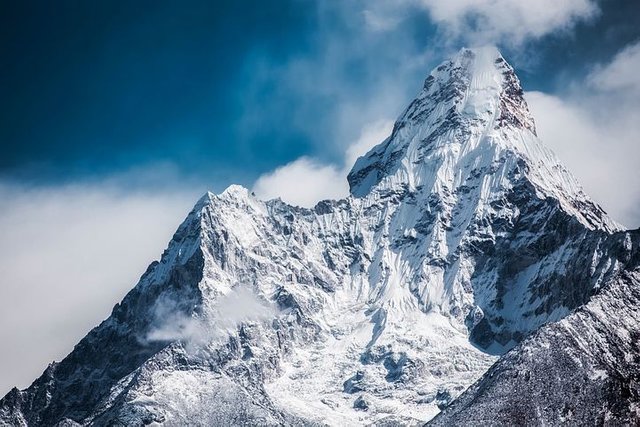
The Mahayana-sutralankara explains that this stage is so called, because a Bodhisattva can’t be disturbed by the two aspects of causation and non-causation. A Bodhisattva now attains the ‘patient acceptance of all realities (dharmas) as they are no longer produced’ (anutpattika-dharma-ksanti). He is not contaminated by any actions. The Buddhas initiate him into infinite Knowledge (atyanta-jnana), otherwise he would enter into final Enlightenment, instead of continuing his efforts to gain Enlightenment for the good of all. He understands the process of the evolution and involution of the Universe. He knows the exact number of atoms in the different elements, of which the Universe is composed. He assumes different bodies and shows them to the people as he sees fit. He acquires the ten powers (dasa bala). This stage is so important that it is called the Stage of Perfection, of Birth, of Finality. A Bodhisattva especially cultivates the Perfection of Aspiration (pranidhana) without neglecting the others, and he pervades the whole world with the feeling of Friendliness.
In the next article, I’ll be discussing The Ninth Stage of the Mahayana Bodhisattva Path in full detail.
References for research:

I will flag comment spam at 1% strength. If you keep on spamming my post, I will flag you at 100%. I don't care if you have limited English abilities, write a couple of sentences about this article, no copy-paste, please. I will flag: one sentence comments, links to your blog and begging for up-votes and follows. Also, I will flag comments that have nothing to do with my blog's article. I will also check your comment section to see if you have been comment spamming on other blogs.


 A link to My Blog
A link to My Blog
maybe this eighth stage in tasauf can be said mortal, although i can not be sure, mortal in tasauf science is no longer look to self (ability, desire, or deed), solely all because god to god
That is much like the bodhisattva, duality no longer holds sway...there is no falling back at this stage. This stage goes beyond my understanding @steemitcountry. I cannot imagine the Buddha-fields, which I think are made by the mind of the Bodhisattva, like Pureland. In Vajrayana Buddhism we can practice creating a Buddha-field in our daily life, all phenomena is unstained and perfect. It is only the impure vision that sees phenomena is stained or impure.
http://www.rigpawiki.org/index.php?title=Buddha_field
thanks my friend, I am trying to learn the teachings of budha from the Indonesian language that I take on the internet, so I more easily understand every link you give..:))
I feel your pain @steemitcountry, your patience is amazing.
Dear @reddust I read the article. You are Very detailed and wonderful information written. First of all thank you. The concept of perfectionism and superiority reminded me of gold. And The golden symbol is the symbol of sun, enlightenment, self-lightening, sanctity, immortality, wisdom, nobility, honor, superiority, perfection and power. People used to use gold as a symbol of equilibrium in everything. Gold is associated with divine principles and is the symbol of great value.
This stage is way beyond my understanding @turkishcrew. The bodhisattva has moved beyond duality, cause and effect, time no longer holds sway...their compassion and equanimity are not contrived or foolish...
I am resteemit your post
after step by step I read, I on one side more amazed at the teachings of Buddha, on the one hand also more difficult to understand it, when one has reached the level of the eight (purification,) how his relationship with other humans in this nature, with the outside world as usual?
@steemitnatural, I am with you, I have a hard time understanding this stage as well. But we can practice seeing all things as pure, work on the virtues called the paramitas, which come effortlessly for the eighth stage Bodhisattva. One of my favorite Tibetan teachers writes about the paramitas , the main practice of a Bodhisattva. I will be writing an article about the perfections after I'm finished with the Bhumi series
http://www.rinpoche.com/teachings/paramitas.htm
I will faithfully follow him my friend, he he he
Beautiful .. Well done on words and tips
Great post from you
Thanks for sharing..
Steadfastness is a good quality to exercise. I wish more folks showed this trait. It represents real commitment. Our friend @lichtblick wrote about Buddha in passing today. Perhaps you caught it. if not here it is. Blessings to you @reddust.
@enjoywithtroy, totally unmovable...rock solid equanimity, gosh I wish I had a little bit of this ...hahah
I will check out the link, have a lovely link @enjoywithtroy.
Greetings friend @reddust I have followed you for a long time, at every stage of the Mahayana Bodhisattva path; It has been very interesting to know a bit about this. But I particularly love this stage. And your very organized blog in which you give a summary to remember the stages that you have already published. I love these topics, I know a little more about something I did not know.
@dyeisydavi, if you wish further study I can give you links that will help you understand the different attainments or non attainments of the Bodhisattva. Thank you for following me and writing this series I learning new things about the Bodhisattva too!
The eight stage is reflecting the experience buhddah have gained from the previous stages, being purified by the ignorance of making wrong choice, greed, an elaborate mental pattern.
All this helps in the eight stages to have control over self acclaim or forming,and having inconceivable, incomparable, immeasurable Knowledge which makes thier actions without error.
All the ten stages is a gradual and continuous process, no stages must be left out if someone wants to really understand the concept.
Thanks @reddust for sharing
At this stage the Bodhisattva will not regress, he has become unmovable because he no longer dwells in duality and he/she no longer has to figure out what to do to help other beings. The answers come without contemplation or thought...Gosh I wish I had that ability, the power to help others without getting in their way or upsetting them would be awesome, esepcially when I have to tell my grandkids to pick up their messes ....hahaha
Each stage the Bodhisattva must go through many many times, each time the process becomes more subtle, more subtle, until there is nothing there at all...
Hmm; what a lot of sacrifice. It really worth every penny of that power
Anytime I read the teaching of Buddhism by you my friend, I just wanna change my way of life. With all I’ve read following this series. I can say Buddhism { IMO } teaches how to be in peace , both on the inside and the outside.
How to seek the light and be liberated. It’s a believe of deeper knowledge and it takes more that just the words of mouth to attain this inner peace. Thanks for sharing again my friend.
More grease to your elbow, keep steeming and touching lives through your teachings
For this stage there is no inside or outside of a Bodhisattva, they do not dwell within duality of the mind and body. I can't imagine that...hahaha
I can glean some teachings from this, letting go of my resentments towards people I feel have hurt me and trying to see all things as pure. Plus I am going to research this stage some more. I had a hard time figuring out what the Buddha-fields mean. I think they are generated by the Bodhisattvas accumulated virtues and merit. The Vimalakirti Nirdesa Sutra goes into the Buddha-fields, I have read this sutra several times but that was years ago and I forget Vimalakirti spent a great deal of time showing the reader exactly what a Buddha-field is...
http://www2.kenyon.edu/Depts/Religion/Fac/Adler/Reln260/Vimalakirti.htm
Last night, after reading the 9 installments again, I remembered a character who has always filled my world, someone who, not being a Buddha, is also from the East. Its proclamation is based on four vertices:
1. Respect for life
2. Be sincere
3. Be kind, and
4. Support to be supported
He outlines the way to live in perfect harmony with the universe. I mean Lao-Tse. He established the virtues to have to live according to the Tao: piety, magnanimity, self-denial, honesty, introspection, inactivity and teaching.
Founder and promoter of Taoism and author of Tao Te Ching, Lao Tse is the father of an eternal philosophy, which is as valid today as it was when he lived. It is an invaluable guide to live life according to nature and to reach the serenity of the soul.
I've read a little bit about Taoism but because Taoism isn't a Buddhist teaching I didn't spend to much time invesigating. The reason why is because I need to focus on specific things, I don't have a lot of time so practice, family, gardening, and art come first. It's best for me to focus on what needs to be done and don't stray to far from the tasks at hand! Thank you for the information.
From what I have read about the main religions of this world their core teachings have the virtues, wisdom, kindness, loving kindness and purity of the heart, patience, and charity as their core teachings.
Thank you so much for this post. Although I'm not a Buddhist myself, I genuinely appreciate the insight you provide into that tradition. And so although I'm following an entirely different spiritual path, I value being able to learn about other ways (such as Buddhism) on their own terms and from the voices of their own practitioners.
What is your spiritual path @jamesdeagle? I enjoy hearing from people who have different faiths as well. Thank you for stopping by and visiting my blog. I enjoy sharing what my teachers have taught me!
Thank you for asking! I am an Eastern Orthodox Christian - in its own way Orthodoxy is very mystical and meditative, at least compared to Western traditions. Also, a westerner could be forgiven for thinking that Buddhism and Orthodoxy are somehow related, given our shared affinities for chanting, prostrating, incense and monasteries. Also, compare the appearance of Buddhist prayer beads to Orthodox prayer ropes!
Obvious theological differences notwithstanding (r.e. the specific reference to "God"), I'd love to get your take as a Buddhist on the following:
One stumbling block on my spiritual path has been that of humility, and therefore my current self-assigned "homework" is to work on developing more humility. My priest has described humility in two different ways, the simpler one being "how you conduct yourself when things don't go your way", and the more complex one being that "humility occurs within community, and so it is about knowing your place within the community," which he had offered in response to a question from me about the difference between humility and excessive self-criticism at a time when my own inner critic had me on the run. (He noted that while very moderate self-criticism can be useful at the practical level, it nevertheless keeps a person focused on themselves, which is antithetical to living the Christian spiritual life.)
He expanded on the latter by saying "if you have delusions of grandeur, then you don't have humility because you don't now your place within the community. On the other hand, if you are overly self-critical, then you also don't know your place in the community (and thus don't have humility), because God loves you." (Not verbatim, but as close as my brain will allow.)
I'm curious to know what your teachers would have to say on the topic of humility, in general and through a similar lens as above (i.e. in contrast to excessive self-criticism). I understand humility to be a highly-regarded virtue in Buddhism, so I imagine your teachers would likely have their own versions of the short/simple and long/complex answers.
Thank you for taking the time to reply to my original comment in the spirit of open and unassuming dialogue.
May we keep each other in our respective prayers. :)